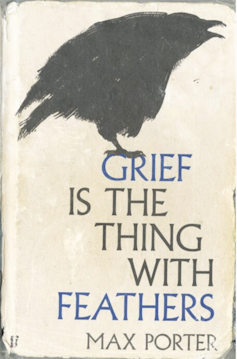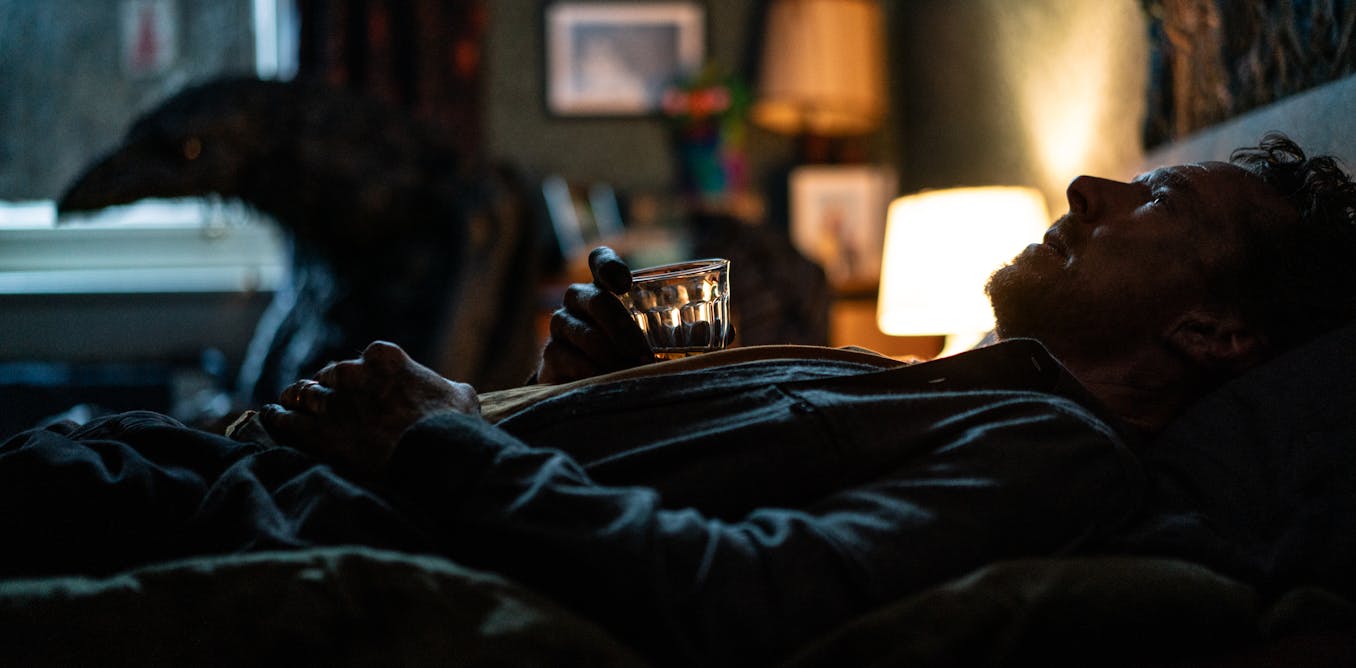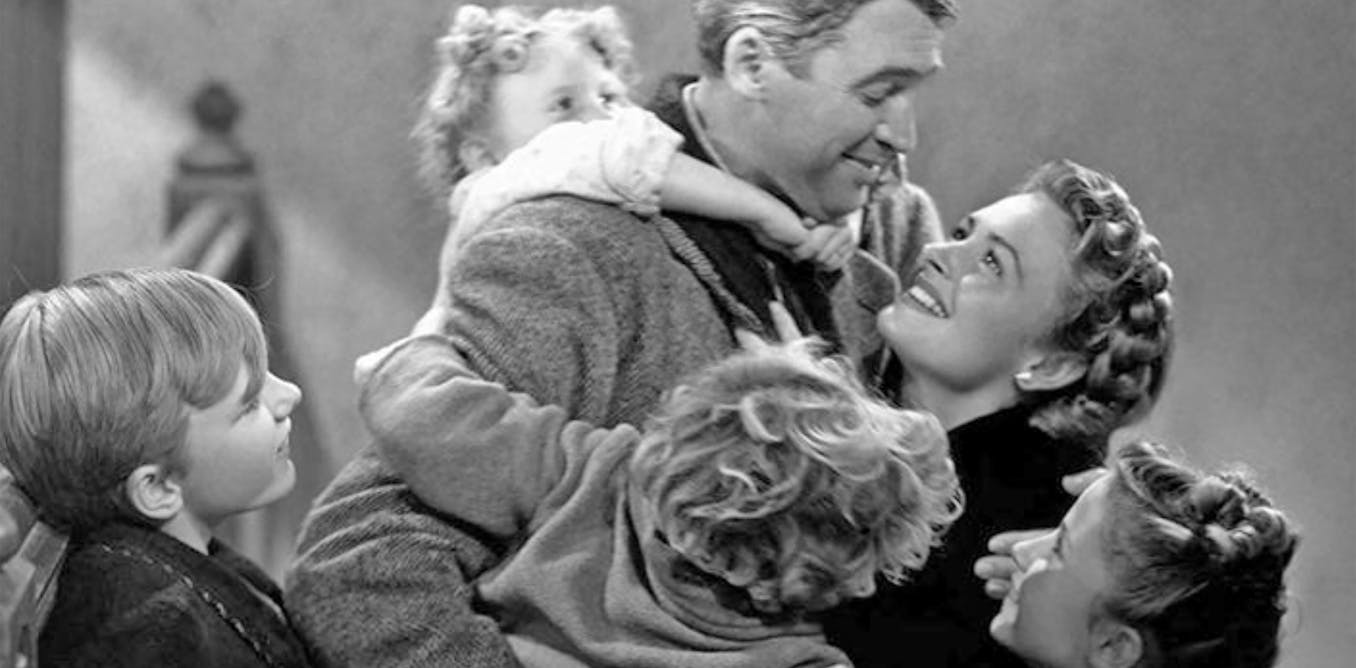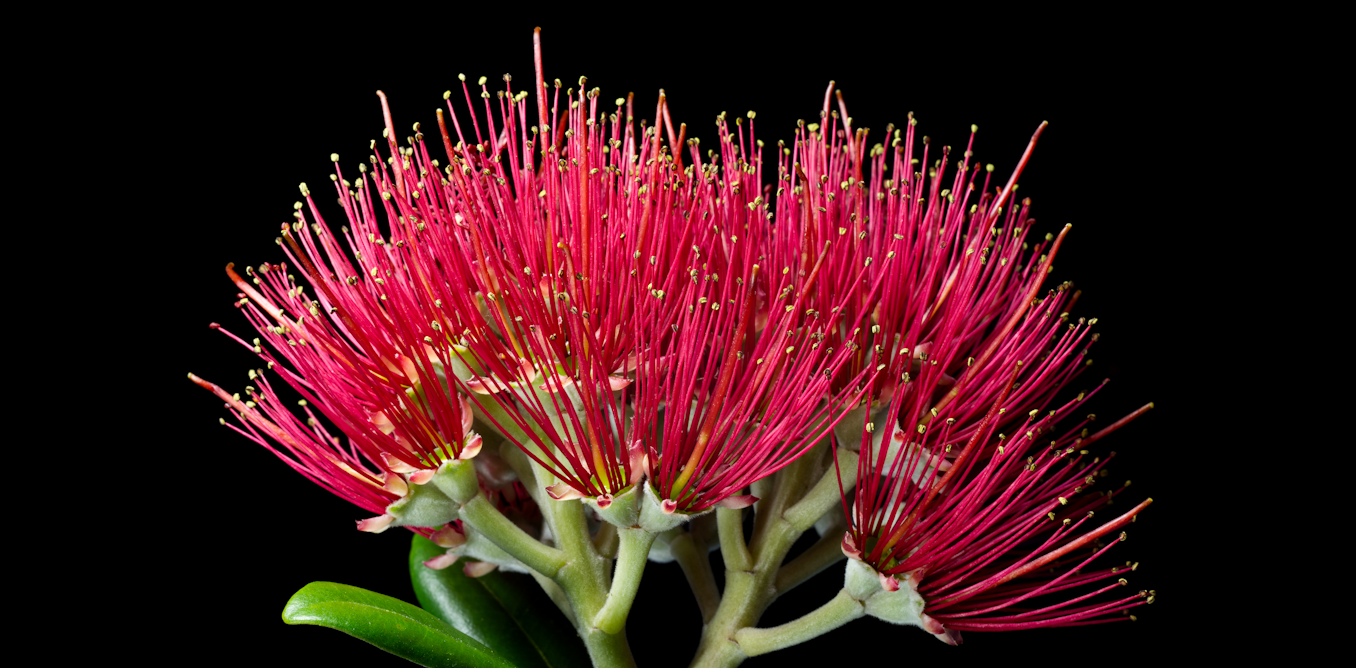Easily the most poignant film I have seen this year, Dylan Southern’s The Thing With Feathers is adapted from Max Porter’s 2015 novella Grief Is The Thing With Feathers. Using both subtle drama and horror spectacle, it cuts deeply into the tenderness of humanity and domesticity, reminding us that the most important things in life (so often taken for granted) are fragile shells that can be cruelly shattered at any moment.
The film follows a nameless father, referred to only as Dad (Benedict Cumberbatch), as he attempts to raise his two young sons in the aftermath of his wife’s sudden death. His grief takes the manifestation of a giant, monstrous crow, menacingly voiced by David Thewlis.
It’s yet another display of Thewlis’s uncanny ability to steal scenes even offscreen. But here, his range is on full display: he vocally dominates with an ambiguous malice. Crow is intimidating yet enigmatic and despite his haunting presence, functions as a kind of guardian figure over Dad and the boys.
Cinema’s engagement with avian imagery has long oscillated between two archetypes: the bird as looming threat and the bird as mysterious protector. Alfred Hitchcock’s The Birds (1963) remains the definitive expression of the former, while Andrea Arnold’s coming-of-age Bird (2024) offers a more recent embodiment of the latter.
Both came to mind while watching Southern’s film – not because it feels derivative, but rather it channels their resonance in subtle, intelligent ways. The sound design, for example, gradually swells from gentle feather rustles to piercing shrieks, which is unmistakably Hitchcockian.
Elsewhere, The Cure on the kitchen radio, playing as Dad fumbles through making a family breakfast, immediately put me in mind of the band’s association with Alex Proyas’s The Crow (1994), in which the eponymous bird also functions as a supernatural guardian and guide.
That echo is deepened further by the fact that Proyas’s film adapts James O’Barr’s 1989 graphic novel – and in Southern’s film, Dad is himself a graphic novelist. This is a deliberate shift from Porter’s novella, where Dad is a writer and literary scholar, and perhaps serves to emphasise the visual nature of storytelling – fitting for Southern’s debut narrative feature.
His previous work, drawn largely from music documentaries such as No Distance Left to Run (2010) about the band Blur, and Meet Me in the Bathroom (2022), about The Strokes and other indie bands, reveals a film-maker attuned to the emotional and cultural relevance of musical choices.
From paper to screen
Poetry is key to Porter’s book, which is written like a narrative poem. Similar in many ways to Edgar Allan Poe’s The Raven (1845), it also alludes to Emily Dickinson’s poem, Hope Is The Thing With Feathers (1891). In Southern’s adaptation the film replaces poetry with visual expression.
Southern weaves in a range of avian film references, while mixing domestic realism with the horror genre. He remains faithful to Porter’s novella which is structured in three parts that alternate between the three perspectives of Dad, the boys and Crow. In the film each has its own titled section, along with the Demon – an adversary that Crow must shield the family from.
Vue Lumiere
If Crow is the embodiment of grief, then the Demon functions as its darker counterpart of despair – a dichotomy that the film explicitly invokes more than once. What makes Southern’s adaptation so engaging beyond the strength of its performances, is the maturity with which it articulates this emotional binary.
Rather than treating grief as something to be vanquished, the film suggests it must be accommodated, even befriended, lest one slide into the far more corrosive, and at times beguiling pull of despair. It’s a persuasive portrayal of mourning that recognises grief not as a wound to be sealed, but a permanent, unpredictable companion that you learn to live with, and eventually draw strength from.
Crow’s impact on Dad is tough to watch, testament to Cumberbatch’s convincing ability to appear both mentally and physically contorted in pain. Crow’s effect on the boys is equally wrenching, particularly in a scene where the bird suggests that it can resurrect their mother if they can produce a detailed picture of her.
Their innocent efforts collapse into heartbreak, forcing them to confront life’s hardest lesson sooner than they should. Thewlis’s elusive performance works well here to channel another well-known archetype of the crow as trickster.

Faber & Faber
While the emphasis on imagery again put me in mind of the song Pictures of You by The Cure, reverberating the idea that the band’s brief audible presence in the film is perhaps more significant and deliberate than it initially seems (although I maybe reading too much into that).
Other musical choices, including Fairport Convention’s Who Knows Where The Time Goes, more clearly alludes to the transient fragility of life, made all the more precious because of death’s inevitable and unknowable timing.
Yet for its darkness, Southern’s film can be unexpectedly uplifting. Like a bird taking flight, it reminds us to see afresh and reassess what matters – those everyday glimmers of joy that burn brighter against the shadow of mortality.
Any film capable of shifting your perspective, even briefly, is worth your time. The Thing With Feathers is a difficult but essential watch: grounded in powerful performances and a sharply crafted adaptation, faithful yet distinct enough to justify its existence on screen. It’s a confident narrative debut from a director clearly beginning to spread his wings.

Looking for something good? Cut through the noise with a carefully curated selection of the latest releases, live events and exhibitions, straight to your inbox every fortnight, on Fridays. Sign up here.
This article features references to books that have been included for editorial reasons. If you click on one of the links and buy something from bookshop.org, The Conversation UK may earn a commission.

The post “a dark but uplifting exploration of grief and despair” by Daniel O’Brien, Lecturer, Department of Literature Film and Theatre Studies, University of Essex was published on 10/23/2025 by theconversation.com







































Leave a Reply